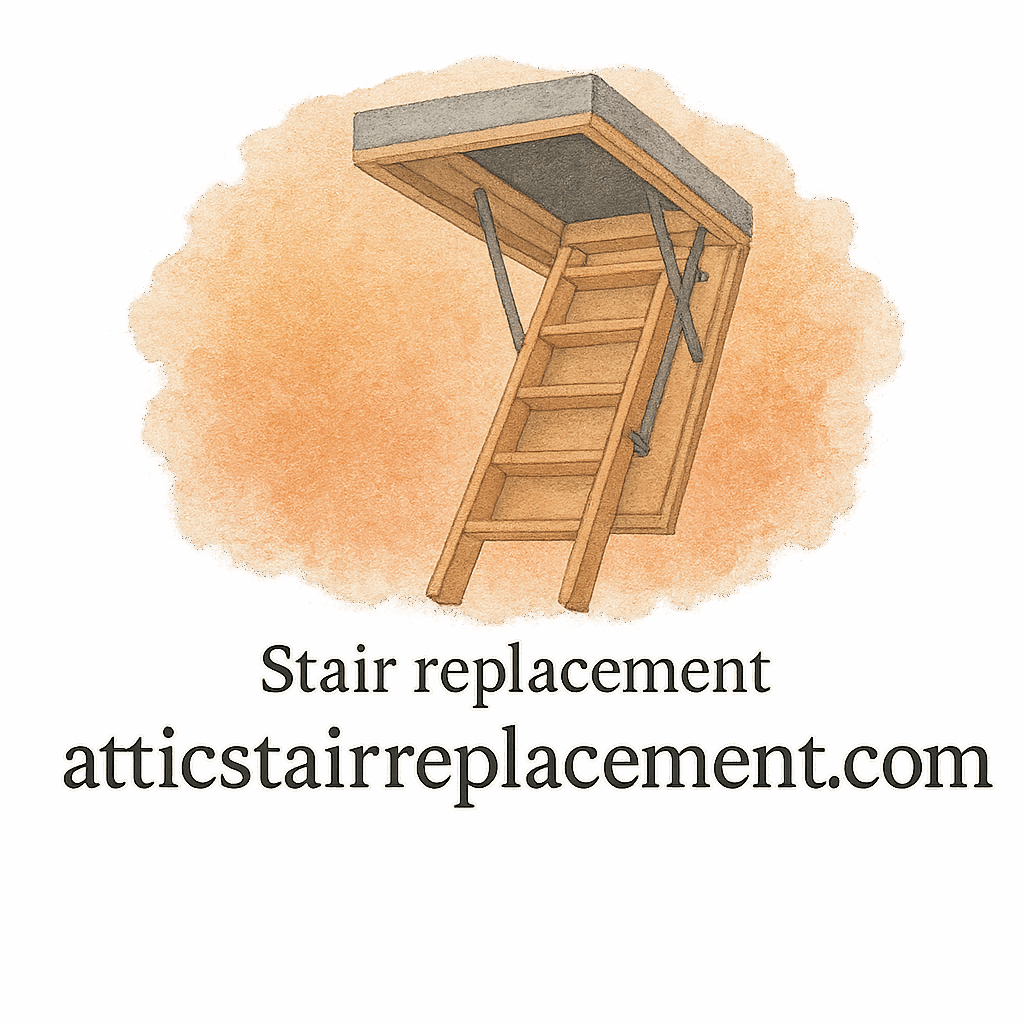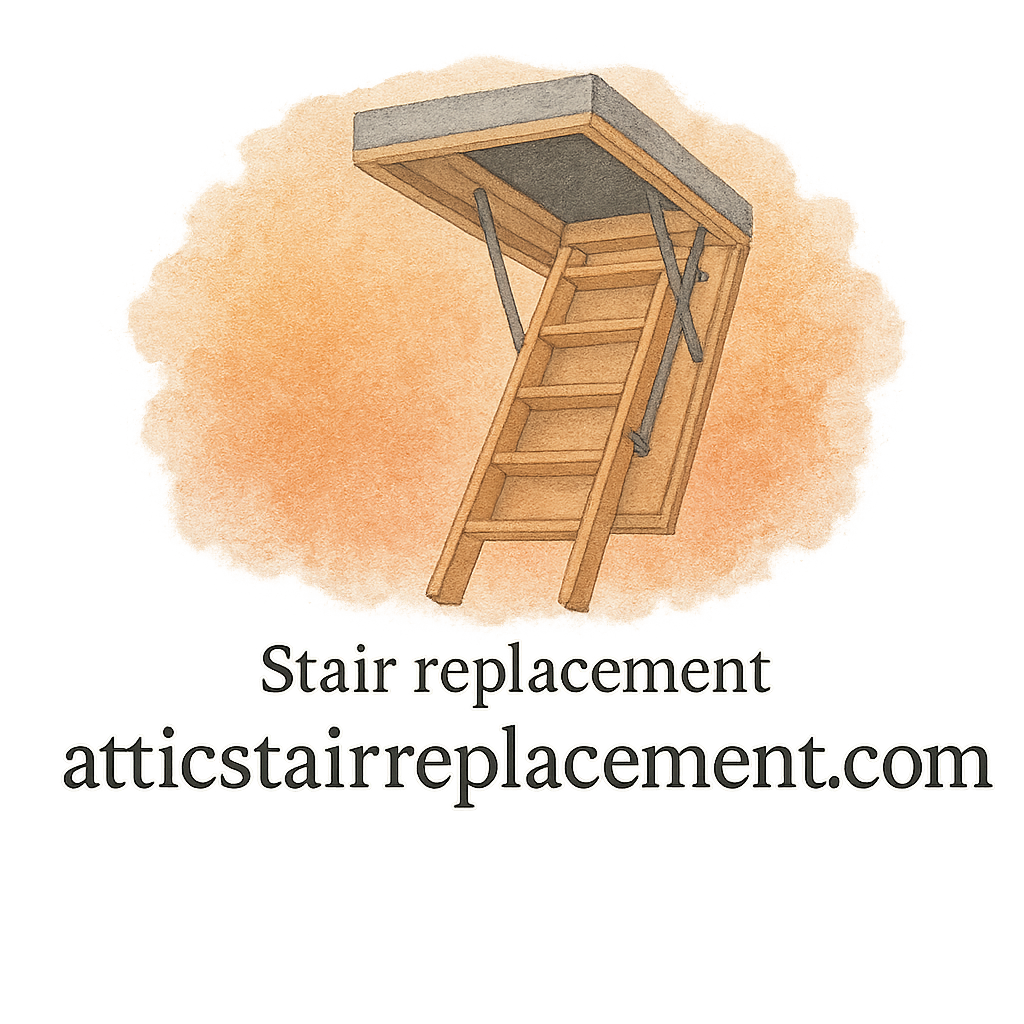Introduction: Why Energy Efficiency Matters
If you’re like most homeowners, you’re always looking for ways to cut down on your utility bills and make your home more comfortable. What if I told you that one of the most overlooked places to improve energy efficiency is right above your head? That’s right — your attic stairs could be costing you more than you think.
Attic stair replacement isn’t just a cosmetic upgrade. It plays a huge role in improving the energy efficiency of your entire home. Let’s break down exactly how making this one upgrade can make a big difference.
Understanding the Role of Attic Stairs
How Heat Escapes Through the Attic
The attic is a major player in your home’s energy performance. In winter, warm air rises and escapes through poorly insulated attic stairs. In summer, hot attic air seeps into cooler living spaces.
The Hidden Cost of Old Attic Stairs
Old, drafty attic stairs can create a tunnel for heat exchange — making your HVAC system work overtime. This not only drives up bills but also shortens your HVAC’s lifespan.
Learn more about hidden costs of outdated attic systems.
1: Sealing Air Leaks
Replacing Gaps and Cracks
Modern attic stair replacements are designed to eliminate those sneaky air leaks that older models ignore. By choosing energy-efficient models, you’re stopping unwanted air flow in its tracks.
Benefits of Proper Insulation Around the Hatch
Adding high-quality insulation around the attic stair hatch creates a barrier against air movement. This small step has a big impact — it’s like sealing your front door tight.
Find guidance on insulation through expert advice.
2: Improved Insulation Standards
New Stairs, Better Materials
Newer attic stair models come with built-in insulation, offering R-values that actually contribute to your home’s energy envelope. These standards make them a solid investment in thermal efficiency.
Check out our product reviews to compare models.
3: Preventing Drafts from the Attic
Tight-Fit Doors and Weather Stripping
A good attic stair replacement includes tight seals and durable weather stripping. This minimizes cold drafts in winter and hot air in summer — reducing strain on your heating and cooling systems.
Explore more about preventing drafts on our maintenance & repair page.

4: Lower Heating and Cooling Bills
Less Work for Your HVAC System
By sealing up energy leaks and insulating better, you reduce the burden on your HVAC system. That translates directly to lower utility costs month after month.
Want to know how this fits into your home improvement strategy? We’ve got a guide for that.
5: Enhanced Indoor Comfort
Balanced Temperatures Year-Round
No more chilly drafts or uneven temperatures. Replacing attic stairs helps maintain a consistent, comfortable climate in your home.
For more attic care tips, browse our expert content.
6: Boosting Home Value and Appeal
Energy Efficient Upgrades Sell Homes
Energy efficiency is a top priority for buyers. By upgrading to energy-efficient attic stairs, you not only improve performance but also increase resale value.
Check our home project advice.
7: Supporting Eco-Friendly Living
Less Energy Waste, Smaller Carbon Footprint
Upgrading attic stairs is a simple yet powerful step toward greener living. Lower energy consumption means you’re doing your part for the planet — without sacrificing comfort.
Browse our eco-conscious renovation tips.
8: Long-Term Savings and Durability
Investing in Durable and Efficient Systems
Energy-efficient attic stairs last longer and require less maintenance. That means fewer headaches and more savings down the road.
Explore durable stair models and plan your DIY installation.
Choosing the Right Attic Stairs
Features to Look for in Energy-Efficient Models
- High R-value insulation
- Airtight sealing gasket
- Easy-to-operate mechanism
- Durable materials (like aluminum or steel)
Browse our installation tips and get started.
DIY vs Professional Installation
While some homeowners can handle this job themselves, others prefer hiring a contractor. If you’re confident and handy, check out our DIY guide to save money.
Conclusion
Replacing your attic stairs might not seem like a big deal — but when it comes to energy efficiency, it’s a game-changer. From reducing utility costs to boosting home comfort, this small upgrade brings massive returns. Whether you’re doing it for the savings, the planet, or just to stop those pesky drafts, energy-efficient attic stair replacement is a smart move.
Ready to start your project? Get insights, reviews, and tips at Attic Stair Replacement.
FAQs
1. How much can attic stair replacement save on energy bills? You can save up to 20% on heating and cooling costs depending on your existing attic access condition and local climate.
2. What’s the best material for energy-efficient attic stairs? Aluminum or insulated wood stairs with an airtight hatch are typically best for thermal performance.
3. Can I replace attic stairs myself? Yes, if you’re handy. Follow our DIY installation guide for step-by-step help.
4. Do energy-efficient attic stairs come with insulation? Many newer models include built-in insulation and sealing features for better performance.
5. What R-value should I look for? Look for attic stairs with an R-value of R-10 or higher for optimal energy efficiency.
6. How do I know if my attic stairs need replacing? Signs include drafts, visible gaps, difficult operation, or excessive temperature changes in rooms below.
7. Will attic stair replacement increase my home’s value? Absolutely! Energy-efficient upgrades are a major selling point and can enhance overall property appeal.
Let me know if you’d like a step-by-step installation guide, comparison of stair models, or more tips on attic insulation!


